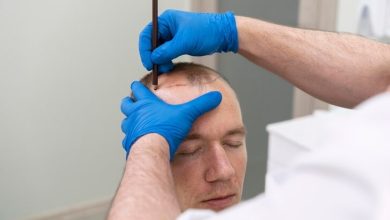Everything You Should Know About Carotid Angioplasty And Stenting

Carotid angioplasty and stenting is a technique that focuses on unclogging blocked arteries to prevent life-threatening complications like stroke. If you are at risk of stroke or have carotid artery disease, you may benefit from Evergreen Park carotid stenting. The procedure disintegrates the built-up fatty deposits in your carotid arteries, improving blood flow to your brain.
What you should know about carotid angioplasty and stenting
Carotid angioplasty and stenting refer to nonsurgical procedures that unblock clogged arteries to restore blood flow to your brain. They are effective for treating and preventing strokes. Carotid arteries are located on either side of your neck. Unhealthy lifestyle choices can cause the buildup of fatty deposits in these blood vessels, restricting blood flow to the brain, a medical disorder known as carotid artery disease. If not treated early, it can result in a stroke. Carotid angioplasty involves inserting and inflating a balloon into the affected artery to open it, improving blood circulation. Stenting is when your doctor places a stent (a small metal) in the clogged artery to keep it open and prevent narrowing. The team at Vascular Specialists recommends carotid angioplasty and stenting when carotid endarterectomy is too risky or impossible.
What to expect during carotid angioplasty and stenting
During your appointment, your doctor administers a local anesthetic and takes an X-ray of your carotid arteries. The team then inserts a tube attached to an artery in your groin and then guides a catheter attached to a balloon through the tube to the clogged artery with X-ray guidance. Your doctor then inflates the balloon to break the debris, opening up the clogged artery. They then place a stent into the newly opened blood vessel and carefully remove the tube, balloon catheter, and filter. You may only need a patch to cover the tiny incision in your groin to prevent infection. After the procedure, you may lie down for a few hours to avoid bleeding at the incision site. The team may advise you to refrain from strenuous physical diet and exercise for at least 24 hours.
What to expect after carotid angioplasty and stenting
After the procedure, your doctor may prescribe specific medication to help with the pain and discomfort, and you may also do exercises for pain relief. You may lie flat for at least two hours and remain at the practice overnight for observation. The team will conduct a neurological exam and a carotid ultrasound to evaluate the outcome of your treatment. They may then discuss the results with you and authorized family members. Before your provider discharges you, they may prescribe medications and provide instructions about diet and exercise. Your medicine may include Plavix and aspirin to prevent clotting at the site where your provider placed the stent. Also, you may need to avoid straining during bowel movements and running up the stairs for at least a week. Your doctor may schedule several follow-up appointments to prevent restenosis, re-narrowing, or blockage in the treated artery. Restenosis is often due to the accumulation of scar tissue.
Call the Vascular Specialists office or book your spot online today to explore carotid angioplasty and stenting.




